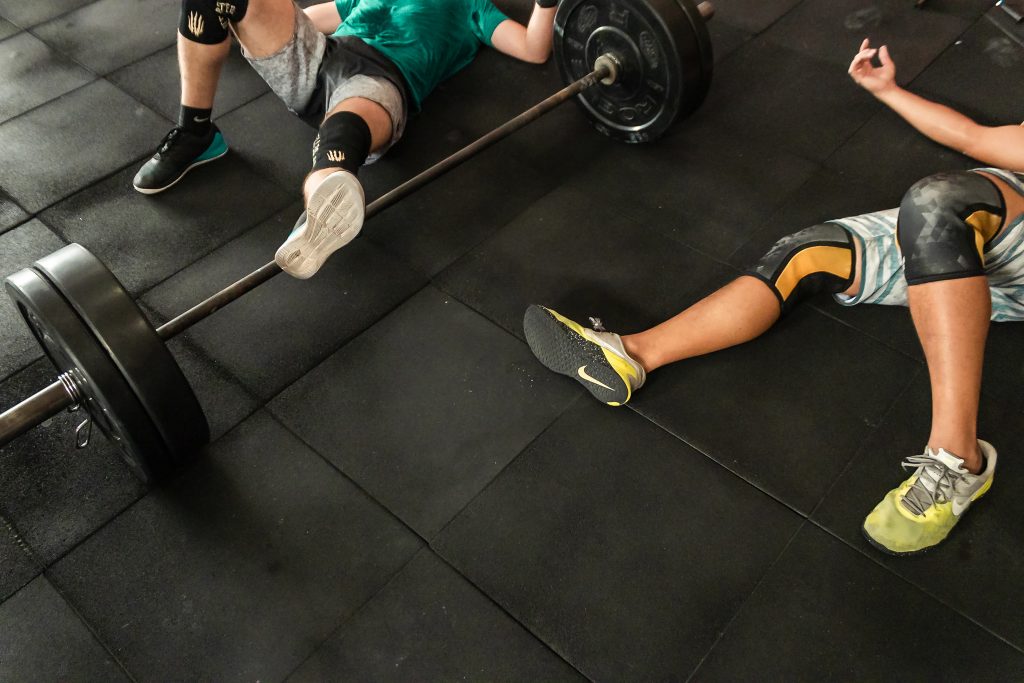When you realize your seasonal sport is fast approaching, you might be thinking that it’s time to “get fit.” If you’re like most people, you don’t start training as early as you’d like, so you end up cramming in workouts and scaling up the intensity to get your body ready as quickly as possible. But be careful not to make these 7 mistakes during your pre-season workouts, or you could end up getting injured and missing your season all together.
1. Rushing the Progression
The purpose of training is to gradually increase the demand on your body, so your body can adapt to the increased load, get stronger, and handle that load more easily and efficiently. For training to work, you have to increase the load slowly and gradually so your body doesn’t get pushed to failure (or injury). Some sources recommend an increase of 10% per week. Unfortunately, a common mistake that many people make is they rush their progression too quickly, or they change too many variables at once, both common training errors made by many that often become the source of injury.
2. Over-Complicating it
One problem that I see all over the media, internet, and even at the gym is people over-complicating good exercises. Whether it’s creativity, boredom, or not knowing any better, people tend to choose more complicated exercises than they need, which makes it harder to focus on good form. Over-complicating an exercise can lead to error, and again, injury. Don’t be afraid to stick with the basics! Some of the simplest exercises are the best.
3. Too General
As you get closer to engaging in your sport, your training exercises should taper from more general to more sport-specific. A bench press or leg press at the gym is a great off-season strengthening exercise; but as you get closer to your season, you might want to bias a more functional movement or resistance exercise that mimics what you do in your sport. A skier might transition to squats or skaters that require them to be in a standing position, rather than sitting or lying down. The point is that your training routine should become more sport-specific to help you perform better and be less susceptible to injury.
4. Sacrificing Quality for Quantity
When people feel pressured to cram in workouts or ramp up the intensity, they have a tendency to sacrifice quality for quantity or speed. Quality of movement is a key component for safe exercise and effective training for your sport. Speed and reps may be added later, but shouldn’t be until proper movement is demonstrated without resistance or speed first. Quality is King and will help you stay injury-free and more resilient for a longer season.
5. Pushing Through Pain
There is a major difference between muscle fatigue, muscle soreness, and joint pain or acute injury pain. If you push through pain and cause further injury, or prolong the healing process, you’ll likely end up facing it again later…and it will probably be harder to fix. Know what muscle fatigue feels like, and what your body can recover from quickly. On the flip side, know what joint pain or an acute injury feels like, and when continuing to exercise will aggravate, cause swelling, and/or inhibit your training gains.
6. Missing the Target
Most people don’t realize that they are compensating during an exercise. For example, someone with a weak gluteus medius muscle may slightly lower their pelvis on the opposite side during a single leg balance exercise. Because they aren’t aware of this compensation, they think the exercise is easy, so they add an unstable surface to balance on, like a wobble board. They have even less capacity to handle this unstable surface, so their pelvis drops even more, and their leg will likely rotate inward, foot will pronate, and trunk will sidebend. They still think the exercise is easy because they haven’t actually fallen down! In reality, the weak gluteus medius isn’t getting stronger, but just gradually getting weaker because it is never actually recruited to work. The strong muscles that overcompensate just keep getting stronger, tighter, or overused; while the weak (important) muscles simply get weaker. The way to break this cycle is to isolate the weak muscles through proper technique and focusing on quality with simple exercises. Don’t over-complicate it, don’t rush it, don’t add speed or reps – get the proper movement down first (see how we circled back through all of those points?).
7. NOT Doing Pre-Season Training
Finally, one of the biggest mistakes people make with their pre-season workouts is not doing them at all. Tons of seasonal athletes jump right into their sport on opening day and ask their body to perform like it did last time, even though it hasn’t done it for several months. This doesn’t always end up in injury, but you’ll be more susceptible to injury and having to give up your sport years earlier than you otherwise would, if this is your pre-season training strategy.
If you’re in the majority of people who don’t necessarily have a detailed plan to get fit or ready for their sport, I hope you find something valuable in this post. I hope you will plan ahead, progress slowly, find simple, sport-specific exercises that help you feel good, get stronger in the right muscles, and truly get fit for many more successful seasons in your sport.
Good Luck in your next season!



